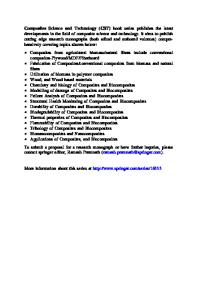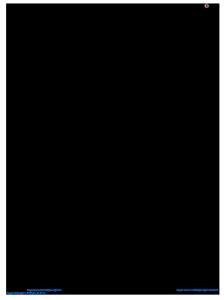Effect of laser surface treatment on surface and bonding properties of carbon fiber reinforced composites
- PDF / 3,637,274 Bytes
- 11 Pages / 595.276 x 790.866 pts Page_size
- 8 Downloads / 411 Views
ORIGINAL RESEARCH
Effect of laser surface treatment on surface and bonding properties of carbon fiber reinforced composites Lei Liu 1 & Xiaodong Liu 1 & Liang Kong 1
&
Min Wang 1 & Peiyuan Hu 2 & Daming Wang 2
Received: 26 May 2019 / Accepted: 4 September 2019 # Springer-Verlag France SAS, part of Springer Nature 2019
Abstract Carbon fiber reinforced plastics (CFRP) is widely used in the aerospace and automotive industries due to their light weight and high strength. The effective joining method of CFRP is bonding, and the surface state of CFRP is the main reason that affects the shear strength of the bonded joints. In order to improve the surface state of CFRP and shear strength, this paper systematically studied the effects of different power (80 W, 120 W, 180 W) laser treatment on the surface characteristics and bonding performance of CFRP and compared with the mechanical treatment (alcohol ultrasonic cleaned, sandpaper sanding). Four different adhesives were used in the adhesive joints, which were performed lap-shear tests. The SEM, XPS and contact angle measuring instrument were used to analyze the changes of physicochemical properties of CFRP after different surface treatment. The results showed that compared with alcohol cleaned and sandpaper sanding, 120 W laser treatment greatly improved the surface roughness of CFRP and formed micron-sized gaps. The water contact angle was reduced from 85° to 59.5°, and the surface energy increased from 25.6 mJ/m2 to 62.7 mJ/m2. The lap-shear results showed that the shear strength of the epoxy joints was improved after laser treatment, and the failure type was changed from interface failure to substrate failure. The polyurethane joint shear strength was not obviously improved and the combination failure of interface and cohesion was transformed into a pure interface failure after surface treatment. Keywords CFRP . Laser treatment . Surface characteristics . Epoxy adhesive . Polyurethane adhesive
Introduction CFRP is a composite material composed of stacked carbon fiber tow as reinforcement and resin (plastic) as matrix, which has high specific strength and rigidity [1–5]. In recent years, with its cost reduction and technology development, CFRP has been widely used in the international automotive field [6–8], which can simultaneously meet the automotive industry for lightweight, safe, comfort and other requirements [9].
* Liang Kong [email protected] Lei Liu [email protected] 1
Shanghai Key Laboratory of Material Laser Processing and Modification, Shanghai Jiaotong University, Shanghai 200240, China
2
Huayu Automotive Body Components Technology (Shanghai) Co., LTD, Shanghai 200243, China
Therefore, CFRP joining technology has a very important impact on the development of the automotive industry. The common joining method of CFRP is adhesive bonding [1, 10]. Compared with mechanical joining (riveting, bolting), the adhesive joint has the advantages of light weight, less stress concentration, anti-fatigue, sealing shock absorption and high energy
Data Loading...










